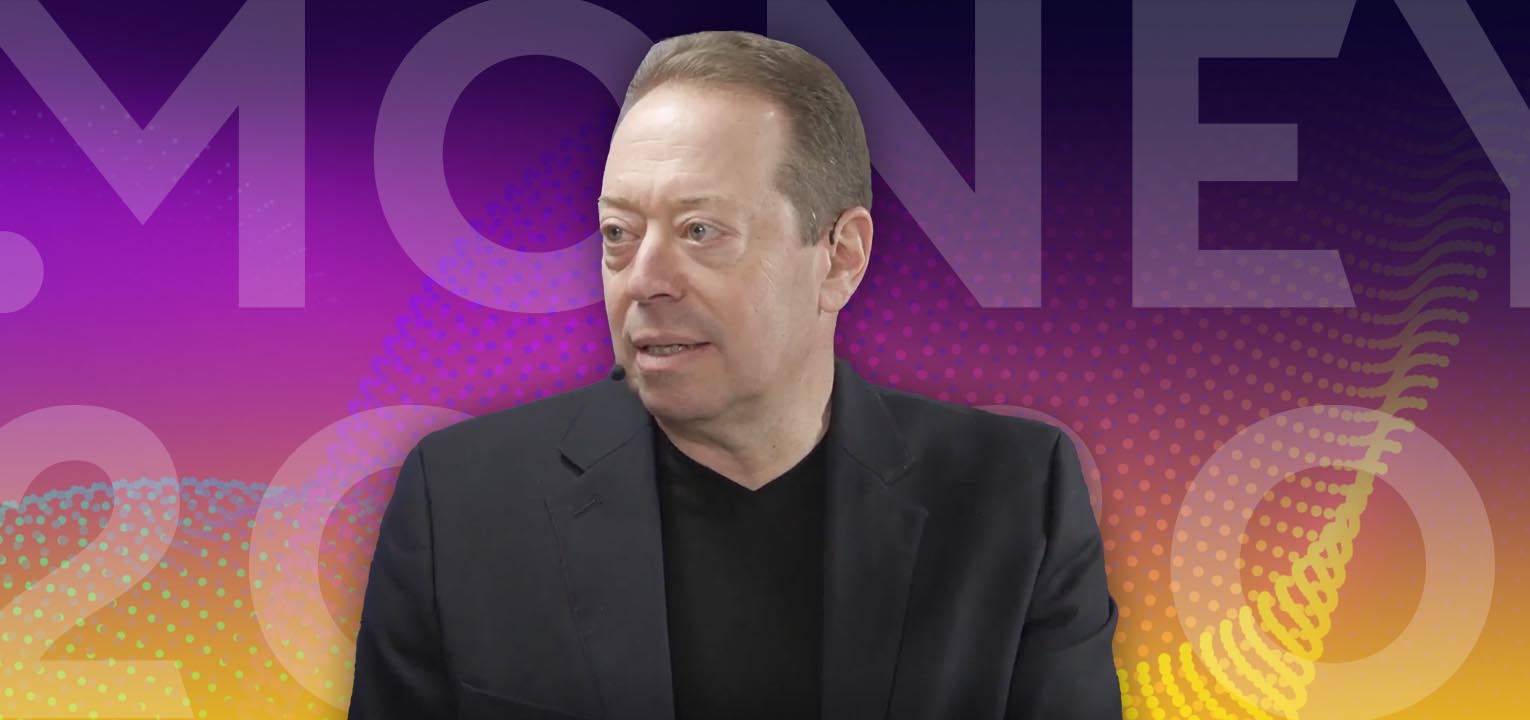November 11, 2021
Why Brazilian Financial Institutions Should Embrace Data-Driven Personalization

It is not a new concept to include elements of financial behavior in the world of financial planning and investments. There is a growing understanding among researchers that human beings are less rational than what was believed decades ago and are much more susceptible to emotional reactions in many aspects of life, including money management.
To bypass some biases, artificial intelligence can help the consumer to organize their finances and invest better, according to Jody Bhagat, President for the Americas at Personetics, a company specializing in data-driven personalization for financial services. Personetics has a presence in the United States, London and Tel Aviv. It is currently building its services in Brazil.
The executive, who participated in a panel at ANBIMA Summit, says that in Brazil, established banks can attract new customers, using their most critical tool: client data. “Although we are in the initial stages of this move to the competitive scene, the coming of open banking and the transition to open finance (the sharing of banking services, investments, insurance and credit) will create greater transparency and more control in the hands of the consumer,” he says. “We will probably see a compression of margins and more client mobility. The emerging winners will offer more personalized solutions based on the behaviors and needs of the client.”
This year, Personetics raised US$75 million from the growth fund of private equity manager Warburg Pincus. The company already had support from venture capital investors Viola Ventures, Lightspeed Ventures, Sequoia Capital and Nyca Partners.
Valor: How can technology help the consumer to plan their financial life and invest more?
Jody Bhagat: Advances in data enrichment and AI (Artificial Intelligence) algorithms can help the consumer to better manage daily banking and equity. This is done by taking in and analyzing customer transaction data to identify: a) what happened? b) what is important to know? And c) what action should I take?
Technology allows financial institutions to understand the needs of the customer and the cash flow on a deeper level, and proactively get involved with personalized interactions and advice for the client. Even more important, personalized interactions and advice can be created at scale and efficiently for any client data base, instead of limiting personalized services to only wealthy clients.
Valor: Which behavioral biases can the use of artificial intelligence help to bypass?
Bhagat: Behavioral biases can lead to less-than-ideal decision-making, and AI algorithms that are more objective can improve some of these behaviors. A simple example is an investor who wants to begin to invest in a long-term goal but does not know exactly how much to put aside and when to do it. AI algorithms can encourage the individual to contribute a specific quantity to an investment account, while at the same time considering their future needs and cash flow.
Valor: Do tools such as “Pay Yourself First,” recently adopted by US Bank, have potential to be a turning point for the sector?
Bhagat: Pay Yourself First is an automated financial solution, patented and innovative, geared toward customers in retail and affluent retail, to help them increase their savings and wealth. Currently about 30% of customers create a simple transaction so every time they receive a deposit of a paycheck into the customer’s checking account, there is an automatic transfer of money into a savings or investment account.
There is a tendency for customers to be conservative in choosing the predetermined transfer amount, since they do not want to inadvertently be in a situation of having a low balance. Pay Yourself First analyzes the clients’ cash flow patterns and expected needs at the time of deposit to determine how much can safely be transferred. It could send the total intended amount, part of it, or none, if the deposits and withdrawals on the account have changed significantly. With Pay Yourself First, clients can reserve money to invest more confidently, knowing that the AI algorithm is “watching over them.”
Valor: At what stage do you see the competition between banks and fintechs in Brazil? Have you been following this movement?
Bhagat: Established banks are facing challenges on multiple fronts: competitor banks gaining a larger share of new accounts, fintechs that selectively look for banking needs – usually lending opportunities – and retailers and providers of technology that offer new distribution points for banking services. Established banks need to confront these new participants and expand their franchise of clients, promoting their most critical tool: client data. Although we are in the initial stages of this move to the competitive scene, the coming of open banking and the transition to open finance (the sharing of banking services, investments, insurance and credit) will bring greater transparency and more control in the hands of the consumer. We will probably see a compression of margins and more customer mobility. The emerging winners will offer more personalized solutions based on the behaviors and needs of the customer.
Valor: In Brazil, research shows that customers prefer human service rather than investing using a robot. Could the development of more supportive models break this barrier?
Bhagat: Many developments could happen simultaneously, resulting in evolution of client behavior and the adoption of AI tools for investing. There will be segments of customers with long-lasting relationships, who prefer human interaction, and others who prefer AI when it comes to investing.
For more sophisticated financial needs – for example, financial planning and real estate financing – clients in general prefer human interaction and advising. Tools driven by AI for investing and banking operations will increasingly be adopted by more customers as it increases confidence in them.
In summary, yes, AI based tools will grow in adoption for investment and will capture a larger market share. Customers need to believe in the brand and in the AI algorithm, and the demonstration of performance and results will accelerate the confidence building. For more sophisticated needs, such as financial planning, there will probably be a strong tendency to look for human assistance.
Valor: We have seen initiatives in the marketplace in Brazil that unite financial services and the commercialization of goods and services. Is this a tendency that comes with digital acceleration? If banks are going to become retail companies and retail companies are becoming banks, who will differentiate?
Bhagat: The arrival of open banking and a greater transition to open finance will change the competitive landscape and how the customer purchases financial services and makes transactions. While the United Kingdom and Europe were the first to adopt open banking in a regulatory manner, Brazil is in the lead, moving more aggressively than the rest of the world toward open finance. This will create more transparency in prices, more distribution points to buy, more grouping of financial services, and greater turnover and transition of customers.
In the environment of greater transparency and choice, the winners will be those who differentiate themselves by service and personalized interactions, where the customers feel that the institution “knows me, values me and advises me better than others.” It will be ever more important for financial institutions to transmit to their clients the benefits of having a relationship with the institution – not only when it is time to make a new sale, but in a consistent and efficient way throughout the length of the relationship.
Valor: Will products like protection against overdraft come into play with the arrival of fintechs who have been promoting these types of services without fees in the international market? Is this source of revenue going to dry up for established banks?
Bhagat: Overdraft penalty fees have been a point of frustration for consumers, regulators and even banks. Most bank executives do not prefer a business model based on penalty fees, but the industry has continued to embrace the fees, and this represents 5% to 8% of the income of banks. The fees are a source of dissatisfaction, from high operational costs in calls to clients and refunds, and usually these fees are charged to those customers who are least able to pay. Customers want the bank to help address their needs and better manage their daily banking, instead of adding fees.
The levels of fees will remain stable for some time, but we will see a decline in fees as banks find more creative ways to help the customer and earn an adequate level of compensation. The answer is in the use of personalization guided by data to understand the patterns of cash flow of the customer and help them avoid having a low balance issue or account deficit. Banks can offer alternatives to solve the issue of penalty fees.
Want To See How Cognitive Banking and AI Can Transform Customer Engagement?
Request a Demo Now
Latest Posts

How to Monetize AI While Building Trust

Cognitive Banking, Primacy, and the New AI Playbook for Banks: Insights from Money 20/20

How to Prevent Churn & Grow Wallet Share: Bank Primacy Playbook

How to Maximize SaaS Value and Future-Proof Your Platform

Truist's Performance Marketing Journey: From Merger Challenges to Million-Dollar Results

How Asia Pacific Banks Are Redefining AI-Driven Engagement









